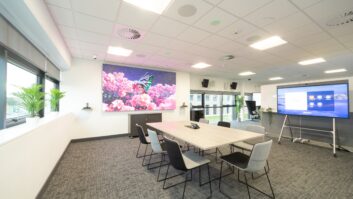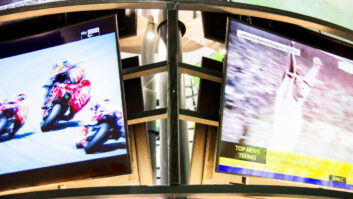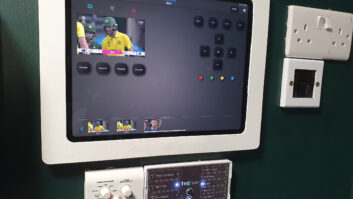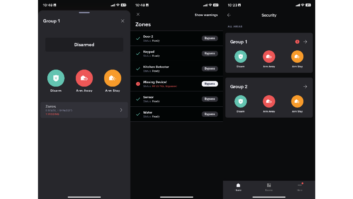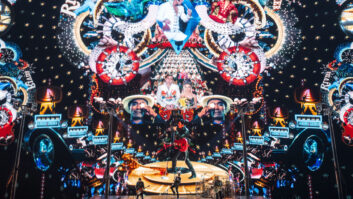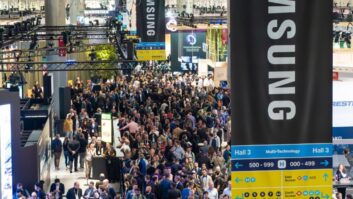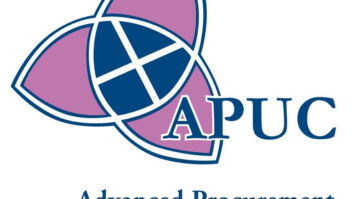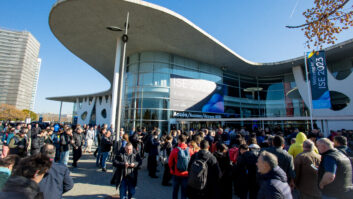Jane Scotland is a director and co-founder of residential integrator Beyond The Invisible. She has recently finished three years’ service on the board of CEDIA Region 1, as marketing chair. She talked to IE Residential about industry trends, upcoming technologies, and what makes an install successful – or not.
Q: Which achievement during your time as CEDIA marketing chair are you most proud of?
A: Being on the CEDIA board is very much a team effort, both with the other board members and particularly the CEDIA staff who actually do most of the work. During my time on the board the industry’s profile definitely increased; we now have to spend a lot less time explaining to architects, designers and end clients what we do. The dedicated Awards Event was launched and has been a great way of showcasing the best the industry has to offer both in the UK and the rest of Region 1.
Q: Are you seeing the economic downturn starting to come to an end?
A: There is certainly confidence returning to the residential market. The crazy thing was that most or our clients weren’t adversely affected by the downturn at all; in fact a number got wealthier. However there was a certain amount of ‘wait and see’ happening, which delayed projects. I think people are now being more rational and have worked out that their personal circumstances are unlikely to change negatively and are now pushing ahead with projects. Ironically we are on track for our best year yet!
Q: What are the ingredients for a successful residential install?
A: Planning and documentation are critical. The better and earlier your documentation is the more likely that the client, architect, interior designer, contractor and electrician will understand what you are delivering and what you need others to provide. Planning is key. There are so many things in our industry that are out of our control, that you’d better have everything you can control sorted out. Every install has its own challenges, the better your plan the better you can cope with the unexpected.
Q: On less successful installs, what are the signs that things aren’t – or won’t be – going so well? When do they become detectable and what can be done about them?
A: There are many things that can go wrong. It is important to set the client’s expectations as to what the installation will and won’t be able to do. If your client won’t accept your professional opinion or won’t listen, then you should seriously consider walking away. This usually becomes apparent early in the sales process. Ignore these signs at your peril as it seldom gets any better. Incompetent architects, interior designers and contractors are a nightmare; they waste everyone’s time. Good documentation reduces your financial risk in these circumstances, but you still land up burning through time that you can’t recoup.
Q: What technologies are you excited about at the moment – and are they the same as the ones your customers are excited about?
A: The most exciting developments are in better HDMI switching solutions. This isn’t something that customers get too excited about as they (not unreasonably) just expect stuff to work. However, customers do want HD everywhere so it is important that solutions are quick and robust.
Q: Are you seeing a trend towards cheaper control systems that are configurable rather than programmable? Do you welcome this trend?
A: The nature of our business is changing. Even the wealthiest clients are looking at getting the best value out of their investment in home technology. At the same time the business is getting more competitive, with less margin on equipment. The only way to make money going forward will be to do more installs with the same number of people or to do higher-value projects. Business owners will need to look closely at how much profit they can leverage out of each man-hour of activity expended on a project. The biggest fixed cost in all our companies is people.
Configurable systems reduce the overall install time and also make future add-on sales and upgrades more attractive for both the client and installer.
Q: If you were to look five years into the future, what do you think will be different about the deployment of home technology – both at the top end, and in the average house?
A: The big difference is that at some point the home technology will have to move to using truly open IP standards. At the moment it is like the computer industry 30 years ago with closed proprietary systems. Although lots of companies claim to use IP, the products aren’t interchangeable. I can connect a Dell computer, Lexmark printer and HP laptop on the same network and they can all communicate. You can’t add an AMX touch panel to a Crestron processor or a Control4 panel to a Netstreams processor.
The only products with any value in the control space will be the software. Products like the iPod touch are eroding the proprietary hardware business very quickly. Companies in our industry simply don’t have the manufacturing clout or scale to make cost effective touch panels and remotes.
New TVs already have Ethernet ports, as do Sky boxes. Most homes will be accessing content via the internet (many do already) and better, easier-to-use mass-market solutions will become available to anyone with a TV and Sky box. All Sky needs to do is to add powerline networking, and the multi-room distribution issues in most homes will be fixed. The popularity of the BBC iPlayer is changing the way we access TV and our relationship with broadcasting. However, interestingly people love the convenience of iPlayer but want to watch it on their TVs, not on a computer.
Q: Finally, is it going to feel strange attending CEDIA events, such as next summer’s Home Technology Event, as a regular CEDIA member rather than a board member?
A: I love going to CEDIA Expo; however, it will be great to have more time to enjoy it this year. The week is always fun but being on the board meant there was a lot to do. In 2010 I am looking forward to having more time to really see all of it properly.
